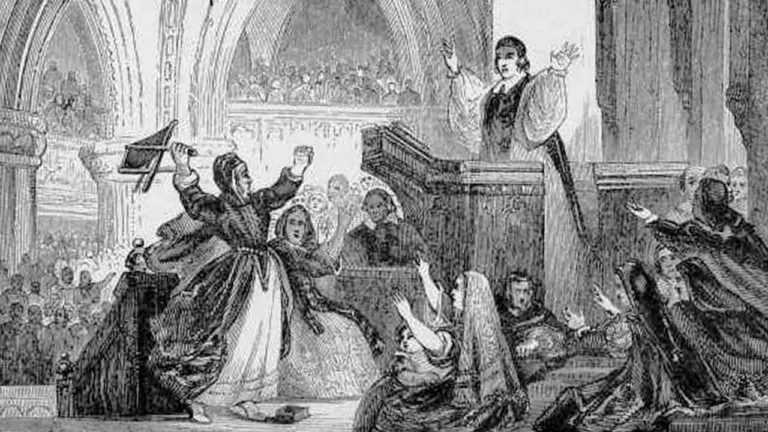You can download or listen to the podcast version (5 minutes) here.
****
Our story is about what should have been a small thing. It wasn’t such an unusual thing. You hear about it from time to time. Someone got upset and threw their stool. Someone got excited, got a little rowdy, and that was the end of it, right? Not quite.
The stool thrower was a certain Jenny Geddes, She wasn’t a notable woman, merely running a fruit stall just outside the Tron Kirk, the main church in Edinburgh. Her stall was the 1600s equivalent of a hot dog stand. She wasn’t the sort of person that you would expect to appear in the history books. She was average. Not unusual. Much like you or me. But maybe that goes to show you that if the cause is important enough, the small can rise to do big things.
In 1635, Charles I, king of England and Scotland, had declared himself to be the head of the Scottish church. Not all the Scots were terribly happy about this. In the spirit of the Reformation, the Scottish church had gone a good ways toward removing Catholic influences and developing its own, distinctive, Protestant style of worshipping. There was quite a bit of fear that Charles would change all that. Charles wanted the Scottish church to be more like the English one, uniting religion in his kingdom.
Catholic subterfuge?
Charles and the unpopular English Archbishop of Canterbury, William Laud, appointed a committee of, admittedly, Scottish bishops to develop a prayer book for use in the Scottish church. The Scots saw this prayer book as a way to make the Scottish church Catholic again by subterfuge. A lot of the more conservative Scots, the more Puritan leaning members of the church, were not impressed.
So when it came time to debut the new Book of Common Prayer in an actual worship service, tensions were running high. Sunday, July 23, 1637 saw Deacon John Hanna nervously ascend the pulpit at St Giles Cathedral in Edinburgh. Sitting in the back of the cathedral was Jenny Geddes. Interestingly, the women were required to sit at the back, and bring their own stools to sit on which undoubtedly has a fascinating story behind it. For our purposes, it’s enough to realize that any stool light enough to be brought from home is also light enough to be thrown across the room.
At some point Geddes had had enough. She rose and colorfully accused Hanna of being a Catholic priest in disguise. She yelled “Devil cause you severe pain and flatulent distension of your abdomen, false thief: dare you say the Mass in my ear?” and then flung her stool across the room and at Hanna’s head.
Cursing flatulence on someone and flinging your stool seems to have been the trigger for chaos. A riot started in the church – possibly involving more flying stools – with the service ending up more like a barroom brawl than a place of worship. One worshipper who dutifully used the appropriate responses from the new Prayer Book was soundly thumped with Bibles. The riot spread out onto the street, even the city council chambers were besieged, and in time the authorities were called in to break up the chaos.
The ruling authorities in Edinburgh appealed to the capital in London to withdraw the new Book of Common Prayer, but the government of Charles I refused. The Scots responded by signing a National Covenant in February 1638, to make the Scottish church more Presbyterian and less Anglican, and later that same year tossed out the Scottish bishops who had written the new Prayer Book.
King Charles treated this as rebellion, and in 1639 launched the First Bishops War, the first in a series of wars with the Scots known as the Wars of the Covenant. These wars would tax his treasury, and, ultimately, lead to the confrontations with Parliament which would eventually cost him his head.
Conclusion
All this came about because one woman threw a stool. The funny part is that historians aren’t even sure if Jenny Geddes was a real person, or just a wonderful element to throw into a pretty crazy story about religious and political reform. Whatever the case, the riot was real, and it goes a long way towards showing that at the right moment, real, average, even boring, people can make a spectacular difference.
Sometimes it’s not where you take your stand that matters, but where you take your seat.
This article is taken from an episode of James Dykstra’s History.icu podcast, where history is never boring. You can check out other episodes at History.icu or on Spotify, Google podcasts, or wherever you find your podcasts.
For some further digging…
Wikipedia on “Jenny Geddes”
Undiscovered Scotland on “Jenny Geddes”
Reformation History on “Jenny Geddes”
Scot Clans on “Jenny Geddes”
InAmidst.com on “Lo and Behold”











